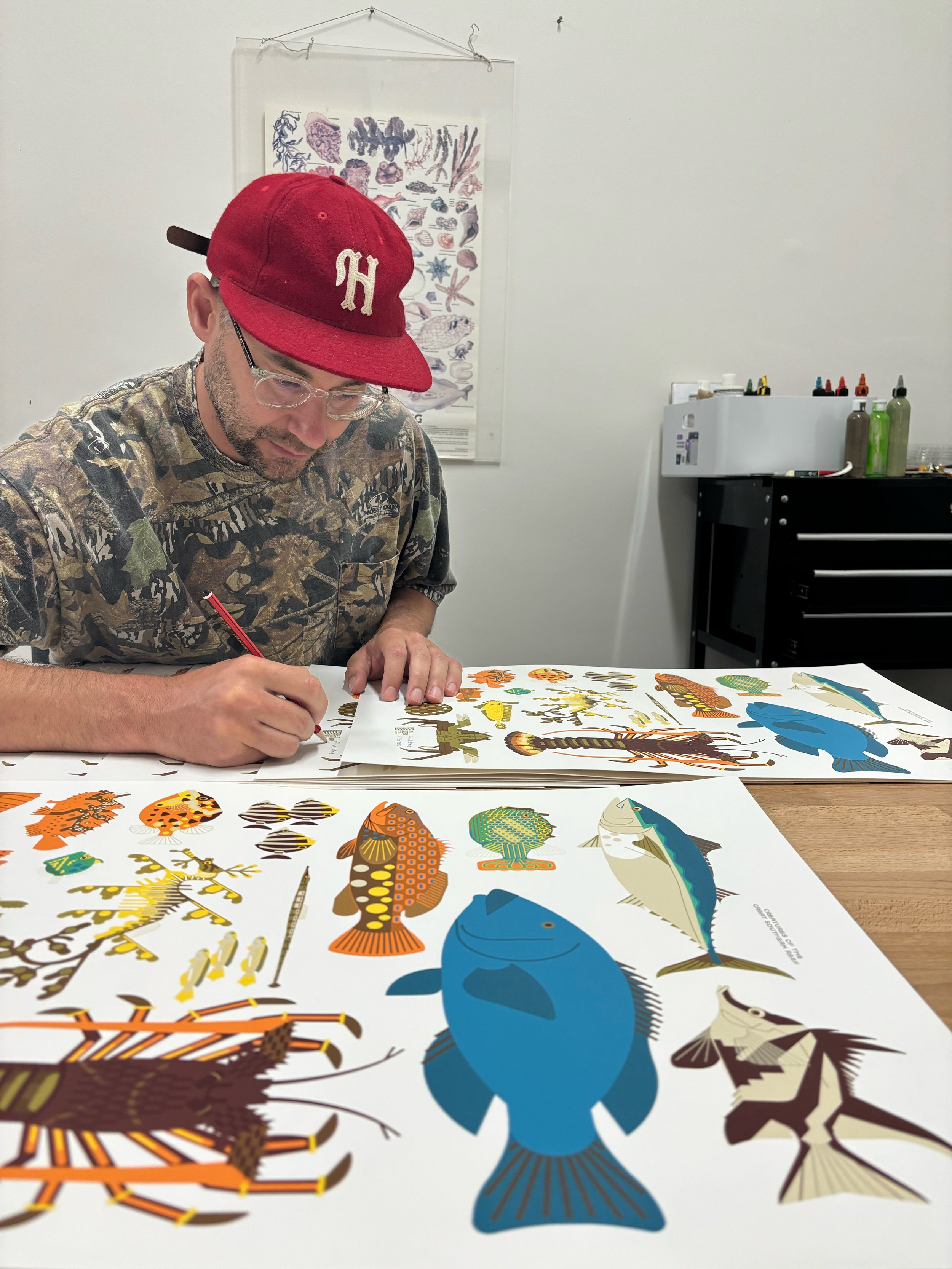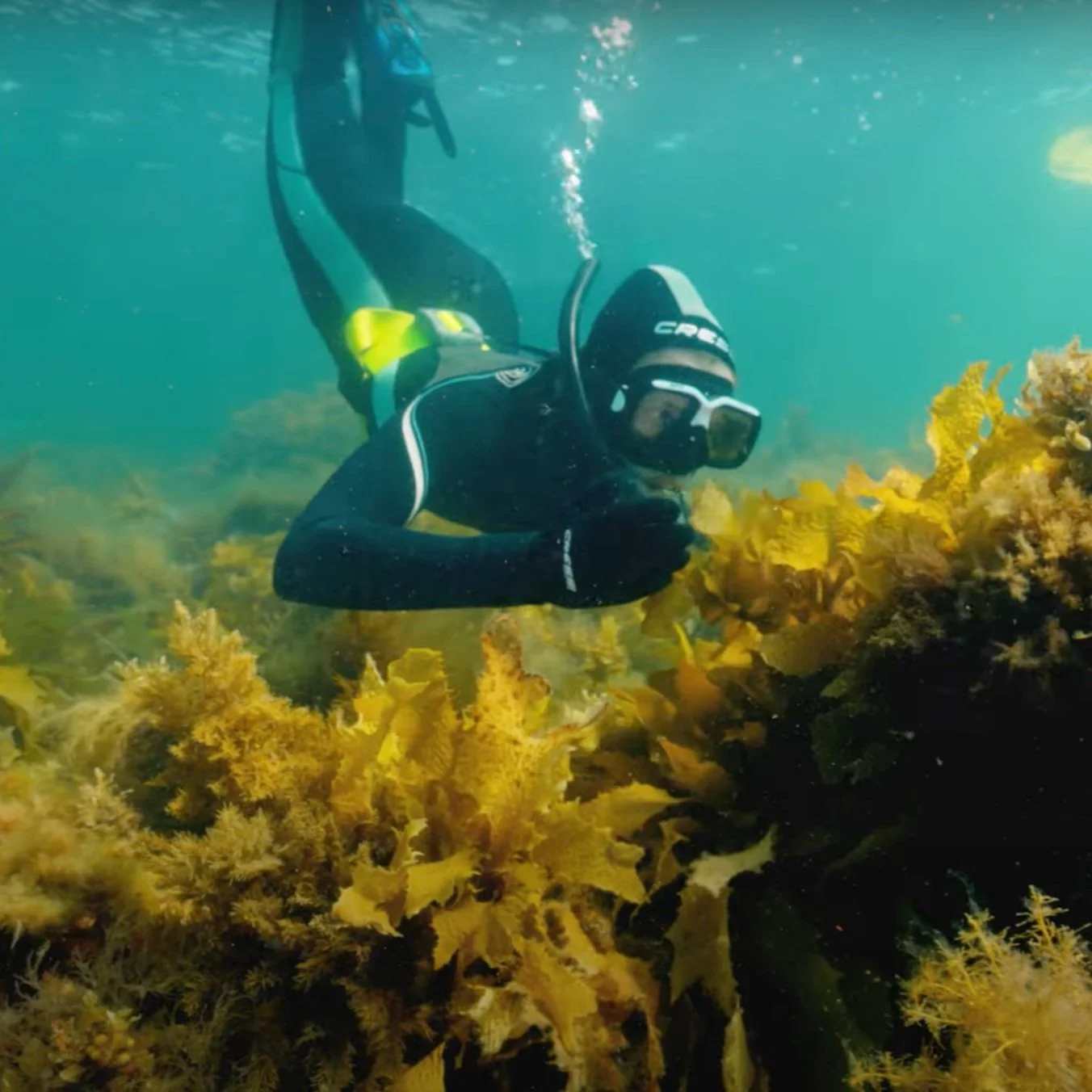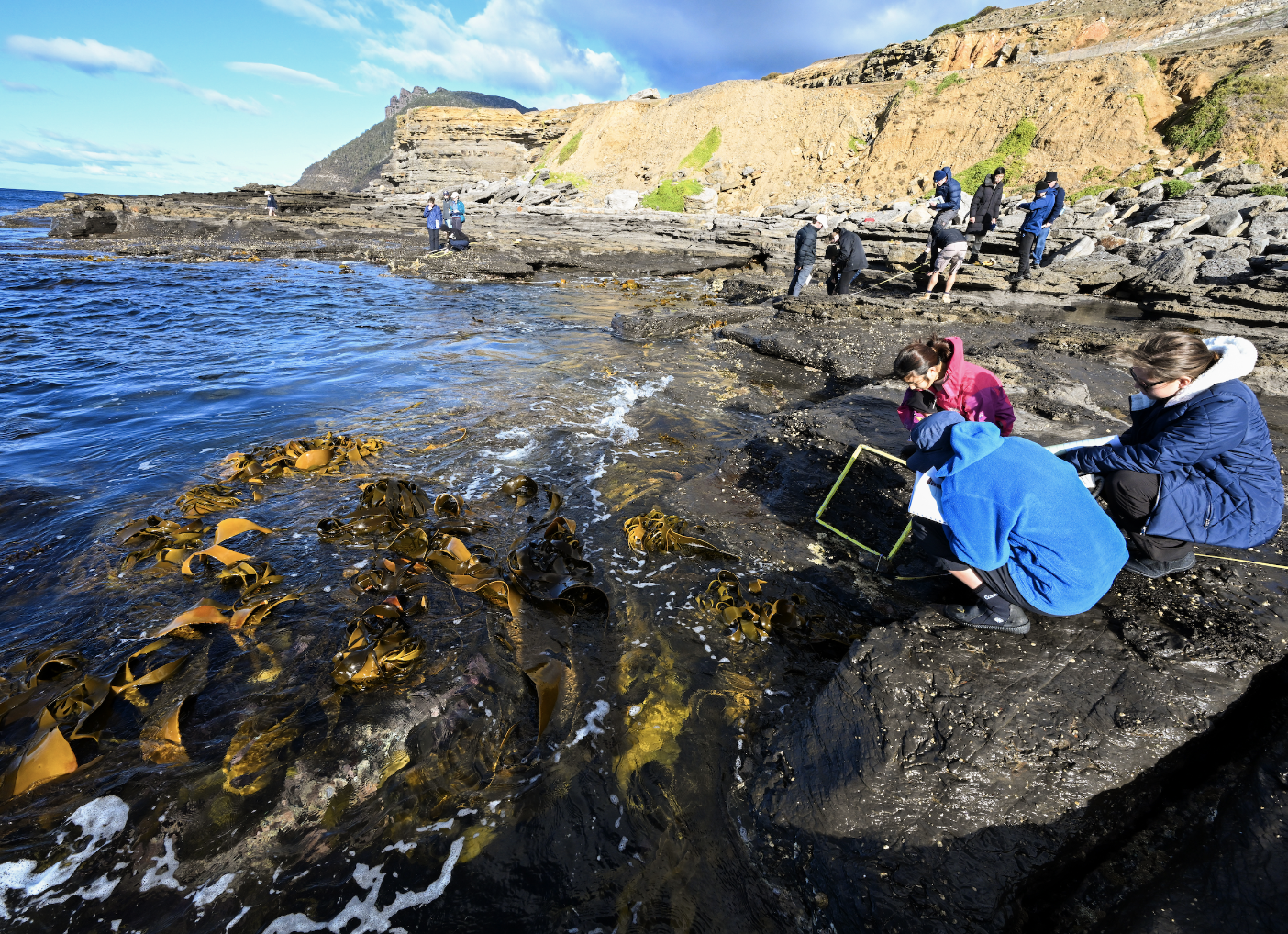december 2024
Welcome to this month’s edition of the GSRF newsletter. This issue includes an exclusive look at our collaboration with artist Amok Island, spotlighting a spectacular limited edition print featuring iconic GSR species.
Discover how Professor Thomas Wernberg is pioneering innovative techniques to safeguard kelp forests, and catch up on the latest from Reef Life Survey’s expanding network of volunteer divers.
We also delve into efforts to secure World Heritage protection for the Great Australian Bight and highlight the transformative storytelling of the "Telling the Whole Story" project in Kingston South East.
Amok Island + GSRF Collaboration
The Great Southern Reef Foundation has partnered with Fremantle-based multidisciplinary artist Amok Island to create a stunning limited edition print, Iconic Species of the Great Southern Reef. This limited edition artwork showcases 18 unique species found along this extraordinary marine ecosystem.
Drawing inspiration from early naturalists’ scientific illustrations, Amok Island’s work balances precision with a minimalist approach, distilling his subjects into geometric forms complemented by a carefully curated colour palette. His deep passion for natural exploration and conservation shines through, driving his mission to highlight the beauty and importance of these species.
Be one of just 200 people to own this exquisite celebration of the Great Southern Reef’s biodiversity. Each print is hand-signed by Amok Island and produced on high-quality, archival-grade paper, making it a timeless piece for art lovers and ocean enthusiasts alike. Don’t miss your chance to secure this unique piece—once they’re gone, they’re gone!
Researcher Spotlight: Thomas Wernberg
From his early fascination with seaweeds to pioneering restoration techniques like "green gravel," Great Southern Reef Research Partnership (GSRRP) member Professor Thomas Wernberg’s work highlights the vital ecological, economic, and cultural significance of the Great Southern Reef. His innovative research spans climate impacts and resilience, carbon sequestration and the strategies to revitalise degraded habitats.
In exciting new announcements, Wernberg has been awarded an Australian Research Council Laureate Fellowship and secured additional support through an ARC Discovery Project to study the kelp forests of the GSR.
Wernberg will lead a team to investigate how the GSR might change in the future as climate change and human activities alter the distribution and abundance of dominant species. The ARC Laureate is the most prestigious research fellowship in Australia, and this is the first time it has been awarded to a temperate marine ecologist. The award presents significant new opportunities to enhance our understanding of this unique ecosystem, foster collaborations within the GSRRP, and ensure the lasting legacy of the GSR for future generations.
In this new article and video, discover how Wernberg’s fieldwork, mentorship, and collaborative vision are shaping the future of kelp forest conservation.
Celebrating Excellence in Early Career Research
Congratulations to UWA Oceans Institute's Dr Albert Pessarrodona, who has been honoured with the Vice-Chancellor’s Early Career Research Award!
This prestigious recognition highlights Dr Pessarrodona’s outstanding contributions to marine science and his dedication to advancing our understanding of ocean ecosystems.
Dr Pessarrodona has already made several significant contributions to our understanding of biodiversity and function of the southwestern marine ecosystem, and The Great Southern Reef community applauds this well-deserved achievement and looks forward to seeing his impactful research continue to flourish.
Long term monitoring: Jurien Bay Marine Park
This month, UWA and UTAS researchers from the GSR Research Partnership joined forces in Western Australia to conduct the long-term biodiversity surveys in Jurien Bay Marine Park. These surveys have been running for 25 years and provide a comprehensive assessment of fishes, invertebrates and seaweeds throughout the marine park.
Jurien Bay Marine Park is a critically important area within the Great Southern Reef due to its high diversity of seaweeds and the confluence of warm-water and cool-temperate species. Across the GSR, warming is causing an increase in warm-affiliated species and a decline in cool-temperate species - a phenomenon known as tropicalisation.
Scott Bennett, from the University of Tasmania, says this is particularly evident following marine heatwaves, like the one experienced in Jurien Bay in 2011. "The ongoing long-term monitoring data from Jurien Bay, is extremely valuable to be able to track how the reef responds and recovers from these disturbances", Bennett continues.
Across an 80km stretch of coastline, the team recorded almost 400 species of seaweed - which to put into context is almost as many as the number of hard coral species recorded across the entire Great Barrier Reef.
COP29 in Azerbaijan
Five researchers from the UWA Oceans Institute - Dr Sam Starko, Dr Karen Filbee-Dexter, Dr Nicki Mitchel, Professors Christophe Gaudin and Thomas Wernberg - attended the recent ‘GOP29’ climate meeting in Baku, Azerbaijan.
Following 2023 and 2024, where ocean temperatures blew past previous records, extreme marine heatwaves and cyclones occurred across the world’s oceans, and the climate crisis cost trillions of dollars, a sense of urgency and bold agreements might have been expected at COP29.
Among the hundreds of pavilions and thousands of delegates, the lack of attention to oceans stood out. Other than a single ‘Oceans pavilion’ anything marine was missing from most discussions, frameworks, examples and speeches, and only mentioned in a few side talks. Decarbonisation at COP29 was mostly about forests, food production, green cities and industries.
Oceans were mentioned mostly in the context of blue carbon as a promising and underused tool to address climate change. There was much talk about ‘Nationally Determined Contributions’ (NDC’s), which are national climate plans for greenhouse gas emissions across all sectors which are due from all countries at COP30 in 2025. While most attention is paid to seagrass meadows and mangroves, seaweed forests are also in focus.
In the many talks about carbon credits there was a new appreciation that the climate crisis and the biodiversity crisis are interwoven and must be tackled together through ‘high quality credits’ and ‘nature based solutions’ that integrate both carbon and biodiversity. These arguments are highly relevant to all coastal ecosystems, particularly those like the GSR which also holds immense and unique biodiversity.
gsr news
















